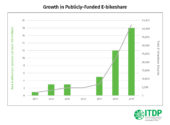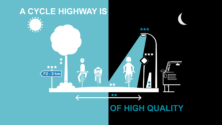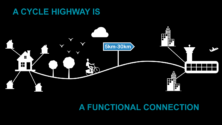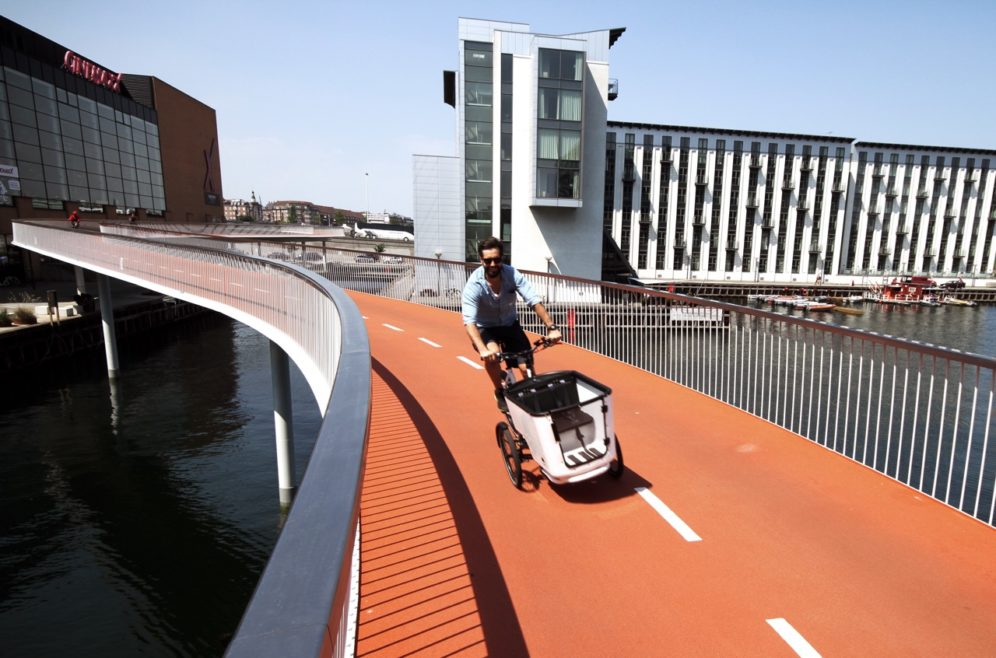
February 04, 2020
Will E-bikes Make Cycle Highways Happen?
Cycle highways have been built predominately in Western Europe, but with the recent popularity and adoption of e-bikes, this infrastructure could be having a moment. Between having an unobstructed route and faster cycles, commutes are being cut in half. Could these highways finally nudge people out of cars?
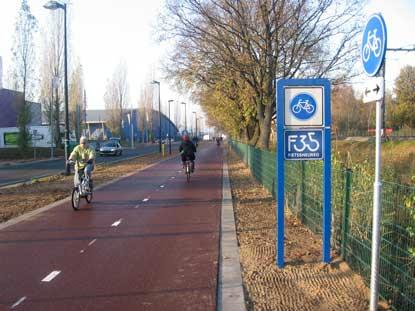
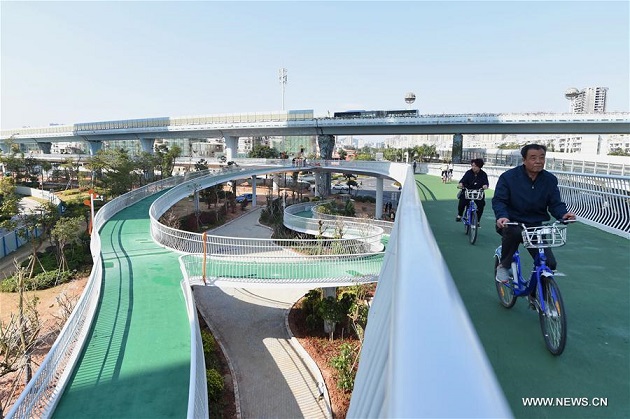
Cycling offers ample benefits to the daily commuter: light exercise, fresh air, and a low stress commute on two wheels. However, people may not even consider cycling as they view it as treacherous due to the many motorized vehicles traversing roads quickly alongside them. A lack of safe, comfortable cycling routes in many cities exacerbates this fear. Even in cities where cycle lanes are common downtown, they tend to disappear as one reaches outer neighborhoods, satellite villages, or suburbs, making accessing the city center and traveling better neighborhoods by bicycle very difficult. Cycle highways, sometimes referred to as bicycle freeways, bicycle highways, cycle superhighways, or fast cycle routes, can help fill this gap by creating bicycle routes between urban areas and connecting to existing infrastructure so that trips by bicycle are easier, faster, and more convenient. So far, some cycle highways have been able to get vehicle drivers to turn in their keys, and start pedaling to the office. E-bikes, which greatly extend the range of cycling, have gained popularity recently and are well-suited to take advantage of cycle highways. This combination could be more convenient and reliable than car travel in congested urban areas.
An e-bike is a two or three-wheeled device equipped with pedals and a battery-powered motor that provides an assist to the rider. These are also referred to as pedal-assist bicycles or pedelecs. Read more here about e-bikes in ITDP’s recent report.
What is (and isn’t) a cycle highway?
Cycle highways are physically separated pathways designed to provide a safe, fast, and functional cycling connection. While there is no global standard or specifications for cycle highways, there are certain features of the design and function that create a relatively uniform understanding of what is and isn’t a cycle highway. First, these highways are built to provide direct, efficient routes that connect cycling commuters from their homes to their work or other important places. These highways are designed for bicycles and cyclists; and do not permit motorized vehicles like mopeds, motorcycles, and other devices with top speeds above 45 kph, pedestrians are also often not permitted. Cycle highways are sometimes built alongside larger vehicle highways or railroads but are physically separated from speeding cars, keeping cyclists safe and allowing them to avoid traffic lights and road infrastructure that controls car traffic. Cycle highways do not impact car travel or motor vehicles.
Only a handful of true cycle highways exist globally and the majority are located in Western Europe. The first cycle highway opened in the Netherlands in 2004. Since then, several European cities including London, Berlin, Brussels, and of course Copenhagen have committed to building out cycle highway networks. In 2019, Beijing unveiled a new cycle highway, one of the few outside of Europe. Beijing’s cycle highway connects residential neighborhoods to a rapidly growing technology industry hub and has slashed the previous bicycle commute time of 90 minutes down to 25 (driving a car still takes over an hour). However unlike its European counterparts, Beijing’s cycle highway does not allow e-bikes.
Different types of paths may be called cycle highways, but without separation from other modes, they are not able to serve cyclists with the same efficiency and safety. For example, in some cities, bicycle paths are built along beaches or scenic routes for recreational cycling. While these lanes broadly encourage cycling, they are not necessarily cycle highways if they do not provide direct routes between residential and urban centers or efficiently link to the urban cycle lane network. The most important feature of a cycle highway is connecting the commuter with job centers; while recreational routes are helpful, they do not necessarily offer the directness and efficiency needed to encourage a shift to cycling.
Following the deadliest year on record for traffic related fatalities, creating safe and supportive infrastructure is important now more than ever. By connecting people to job centers, cycle highways complement protected bicycle lanes and slow streets in dense urban centers, expanding the reach of the safe cycling network. And the growing adoption and availability of e-bikes makes commuting by bicycle easier and faster.
A new opportunity for cycle highways
The recent and rapid global adoption of and access to electric bicycles, both personally owned and as part of shared systems, present renewed viability for cycle highways. By design, cycle highways facilitate longer trips by bicycle (trips on the F3 cycle highway connecting Leuven and Brussels average 23km), which is why they are typically used for commuting. However, the share of people willing to cycle this distance daily is limited by physical fitness, wanting to avoid arriving to a destination sweaty, and the amount of time it takes to cover that distance. E-bikes, which use a battery-powered motor to provide riders with a pedal- or throttle-assisted boost, make it easier for more people with varying fitness abilities to cycle longer distances with less effort. Studies show that older adults, women, and people who do not consider themselves physically fit are more comfortable riding an e-bike compared to a traditional pedal bicycle. And, e-bikes can be competitive with cars on travel time for trips during peak congestion hours, and particularly when comfortable cycle infrastructure is available.
Cycle highways have been successful at getting more people to cycle. In Copenhagen, where cycling mode share is already high, one cycle highway route saw a 26% increase in cyclists who had previously commuted by car, and many of the other routes saw a more than 10% increase in cyclists who had previously driven. Part of the shift was attributed to cyclists reporting feeling safer, a significant contributing factor to people getting out of cars and onto bicycles. While Copenhagen has a high share of people walking, cycling, and using public transit, the mode shift is notable. The combination of an unobstructed pathway and a cycle that can travel farther with less effort reduces trip time and energy expenditure for cyclists, making cycle highways and e-bikes a promising pairing.
Read more about cycle highways and see more infographics on Cyclehighways.eu
Getting cycle highways right
Cycle highways can present a major boon to bicycle commuting, but the design and quality are critical for convincing people to leave their car at home and cycle to work or school instead. Because cycle highways prioritize directness and uninterrupted travel, security and access concerns may arise. For example, since cycle highways often run next to rail lines or highways, they may not get the “eyes on the street” effect that helps cyclists feel secure on well-populated streets. Similarly, intermittent entrances and exits (to minimize interruptions in momentum) means reduced access to destinations along the cycle highway. This effect can be minimized by ensuring that cycle highways connect with other bicycle infrastructure that provides local access. Recognizing these trade-offs, cycle highways should:
- Provide direct, easy to access routes with few interruptions that connect travelers from lower-density residential areas to high-density destination centers
- Feed into urban protected bicycle lanes and other high-quality bicycle infrastructure where available
- Promote cyclist comfort and security through shade, lighting, and signage
- Include physical design elements and enforcement that prevent high-speed vehicles like mopeds from entering.
As cities proceed with policies that restrict car travel, such as low emission zones and congestion charging, cycle highways and e-bikes can provide a viable, affordable alternative to driving. When constructed and designed with public transit in mind, cycle highways can better connect people to public transit. While political will can be a challenge, particularly in allocating enough budget to design and implement a high-quality cycle highway, the benefits are striking and clear. Cities should consider integrating cycle highways into their network planning for cycling infrastructure, creating a system that works for short and longer distance trips by bicycle.


